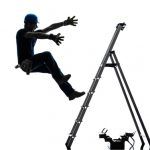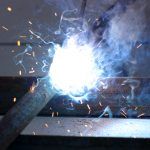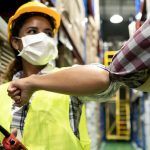
5 Of the Most Common Workplace Injuries & Accidents
Workplace injuries and accidents can have serious consequences for employers and employees alike. Without the necessary precautions and measures in place, workers are at risk of workplace hazards, mild and severe. When employees are incapacitated by workplace injuries, the organisation also suffers.
As such, the team at Advanced CT would like you to know about the most common workplace injuries and accidents.
1. Strains and Sprains
These workplace injuries occur when workers overexert themselves in activities like lifting heavy objects. Strains occur when muscles and tendons twist and pull too far. Similarly, sprains are the result of ligaments stretching to the point of tearing. Manual lifting, uncomfortable postures, and repetitive activities are risks that can result in these injuries.
Preventing them requires educating workers on proper techniques for manual handling and using lifting aids and tools for particularly heavy items. Also, taking breaks periodically and stretching to relieve tension in the muscles, tendons and ligaments can reduce the chances of developing strains and sprains.
2. Slips, Trips and Falls
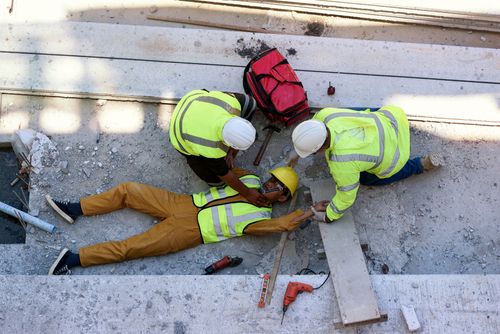
Slipping in the workplace usually occurs when the traction between a worker’s footwear and the walking surface isn’t enough to facilitate walking. Floors covered in water, grease, oil and other substances can force employees to slip. This can also happen with improper footwear, varying traction on the floors or loose rugs and mats.
Tripping and falling happen when objects collide with workers’ feet and they lose their balance. These can be caused by clutter in the workplace, poor lighting, uneven walking surfaces, stray cables, etc.
These workplace injuries can be avoided by keeping the workspaces neat and organised, installing non-slip floors or mats, and ensuring that the work area is properly lit at all times. Any potential hazards, like wet floors, should also be marked with signs and employees should have the appropriate, non-slip footwear.
3. Cuts and Lacerations
A study on workplace injuries shows that 30% of all workplace injuries are cuts and lacerations and 70% involve hands and fingers. These wounds can be as serious as deep punctures and slashes or amputations.
Hazards that typically cause cuts and lacerations include tools in poor condition, tools used for the wrong purposes, inadequate safety equipment and inadequate training. Providing the appropriate training and protective equipment, like goggles, gloves, helmets and boots can prevent these incidents from occurring. Furthermore, ensuring that tools are regularly maintained, appropriately labelled, and properly stored can also protect workers.
4. Burns
Heat, electricity, or chemical exposure are the usual suspects behind these injuries. Burns usually come in three categories;
- First-degree (superficial burns with minimal lasting damage).
- Second-degree (partial thickness burns that present infection risks)
- Third-degree (full-thickness burns that can damage underlying tissue like muscles and bones)
Common hazards that lead to burns include hot surfaces, open flames, and chemicals. Scalds are similar to burns but they are mostly caused by hot liquids like steam, boiling water and hot oil.
Employers can reduce the risk of these accidents by giving employees the right training on how to handle chemicals and other hazardous materials safely and by providing the right safety gear. Also, ensuring that all equipment is kept in good working order will reduce the risks of burns occurring. Furthermore, employers can set up an emergency response plan in the event of a fire or other catastrophe, as well as install smoke detectors, sprinkler systems, and fire alarms.
5. Repetitive Motion Injuries
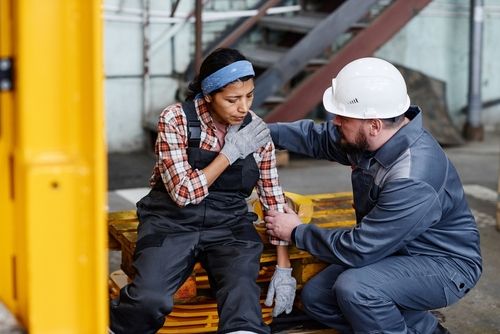
Repeatedly using a single motion, such as typing or using a mouse, for extended periods causes these workplace injuries. Poor ergonomics, bad posture, and insufficient training are common hazards that lead to workers developing repetitive motion injuries.
To reduce the risk of repetitive motion injuries, employers may want to consider changing employee work schedules or switching up their tasks. Employers can also help prevent these injuries by giving workers the right ergonomic training, providing the right equipment, including ergonomic chairs or keyboards, and promoting breaks and stretching during the workday.
How Safety Audits and Training Prevent Workplace Injuries
Engaging the services of workplace safety professionals to carry out audits and conduct training sessions with employees can be vital in preventing workplace injuries.
Safety audits involve regular inspections of the workplace and assessment of safety procedures regularly. This will facilitate hazard identification for employers and injury trends in employees, allowing swift and effective remediation to take place.
Training allows employees to acquire the necessary skills and knowledge to work safely. Their training usually includes safe workplace practices, proper use of tools and equipment in the workplace and identification and reporting of hazards. Ergonomics, manual handling techniques and other methods to prevent injuries can be included as well.
Investing in safety audits and training facilitates workplace injury prevention in a comprehensive fashion, allowing employers to protect workers and their businesses at large.
Advanced CT – Leaders in Occupational Health & Safety
Workplace injuries and accidents can have a big impact on people’s physical, mental, financial, and professional lives. Employers can contribute to lowering the risk of workplace injuries and fostering a healthier, more productive workplace by adopting a proactive attitude to workplace safety, investing in safety audits and training, and putting into place effective injury prevention strategies.
Please contact us if you are looking to improve your workplace safety. Advanced CT’s team of diverse and certified professionals has delivered relevant and cost-effective safety solutions since its founding in 1998. Our programs can be delivered based on your schedule and your requirements. Choose us to ensure the safety of you and your employees.

